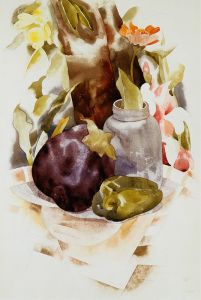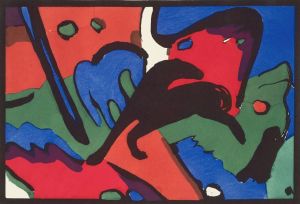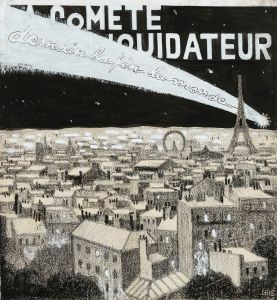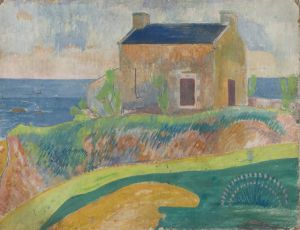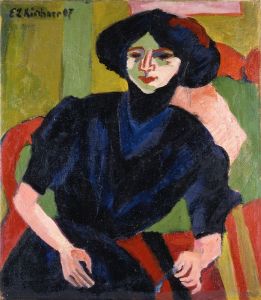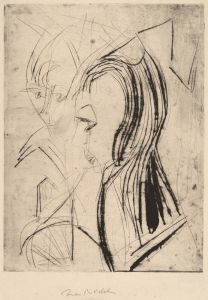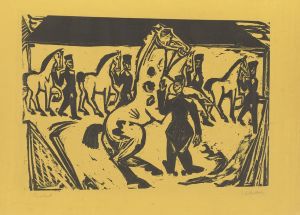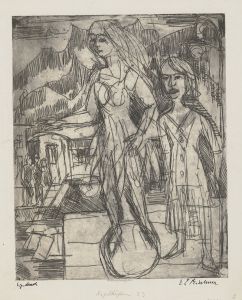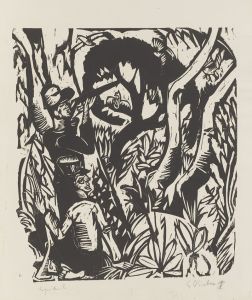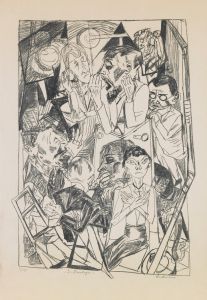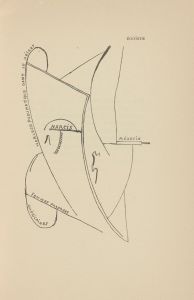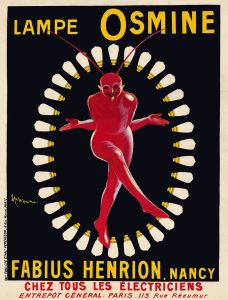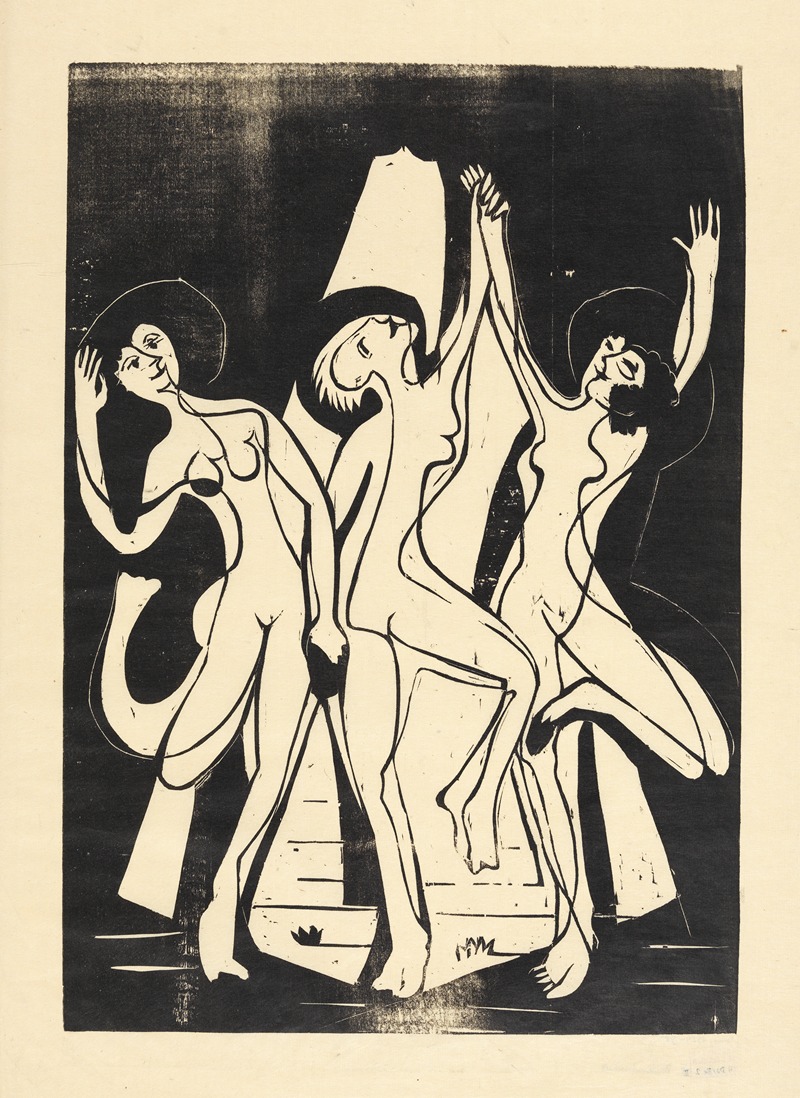
Farbentanz
A hand-painted replica of Ernst Ludwig Kirchner’s masterpiece Farbentanz, meticulously crafted by professional artists to capture the true essence of the original. Each piece is created with museum-quality canvas and rare mineral pigments, carefully painted by experienced artists with delicate brushstrokes and rich, layered colors to perfectly recreate the texture of the original artwork. Unlike machine-printed reproductions, this hand-painted version brings the painting to life, infused with the artist’s emotions and skill in every stroke. Whether for personal collection or home decoration, it instantly elevates the artistic atmosphere of any space.
Ernst Ludwig Kirchner was a prominent German expressionist painter and one of the founding members of the influential art group Die Brücke (The Bridge), which played a crucial role in the development of modern art in the early 20th century. Kirchner's work is characterized by its bold use of color, dynamic compositions, and an expressive style that sought to convey emotion and movement.
"Farbentanz" (translated as "Color Dance") is one of Kirchner's notable works, although specific details about this painting are not extensively documented in public records. Kirchner's oeuvre often explored themes of modern urban life, the human figure, and the vibrant energy of the world around him. His works frequently depicted scenes of Berlin's bustling streets, cabarets, and the expressive movements of dancers, capturing the spirit of the time with vivid colors and energetic brushstrokes.
In "Farbentanz," Kirchner likely continued his exploration of these themes, using his signature style to convey the dynamism and vibrancy of dance through color. His approach to painting was heavily influenced by the Fauvist movement, which emphasized painterly qualities and strong color over representational or realistic values. Kirchner's use of color was not merely decorative but served to evoke emotional responses, making the viewer feel the rhythm and movement inherent in the dance.
Kirchner's work was deeply affected by the socio-political changes of his time. The early 20th century was a period of significant transformation in Germany, marked by rapid industrialization, urbanization, and the upheaval of World War I. These changes were reflected in the intensity and sometimes the anxiety present in his paintings. Kirchner's art often expressed a sense of alienation and tension, capturing the complexities of modern life.
Throughout his career, Kirchner faced personal and professional challenges. The outbreak of World War I had a profound impact on him, leading to a nervous breakdown and a subsequent discharge from military service. His mental health struggles were compounded by the rise of the Nazi regime, which labeled his work as "degenerate art." In 1937, over 600 of his works were confiscated from German museums, and many were destroyed. This period of persecution and the deteriorating political situation in Germany deeply affected Kirchner, who eventually took his own life in 1938.
Despite these challenges, Kirchner's legacy endures. His contributions to expressionism and modern art have been recognized posthumously, with his works held in major collections worldwide. "Farbentanz," like many of his paintings, exemplifies his innovative use of color and form to capture the essence of movement and emotion, reflecting both the vibrancy and the tumult of his era.
While specific details about "Farbentanz" may be limited, the painting remains a testament to Kirchner's artistic vision and his ability to convey the complexities of human experience through the medium of paint. His work continues to inspire and influence artists and art enthusiasts, underscoring the enduring power of expressionist art.





